(5053 products available)



















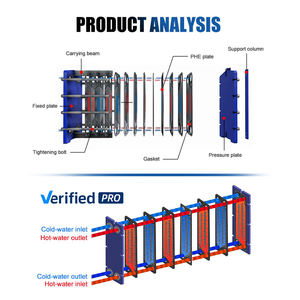












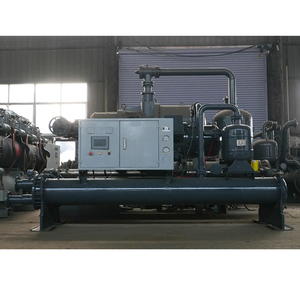





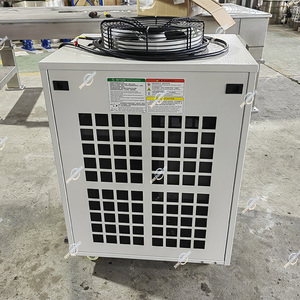




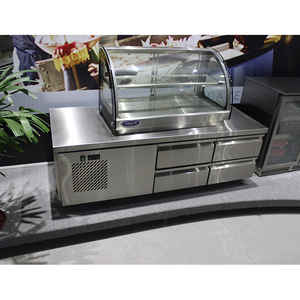








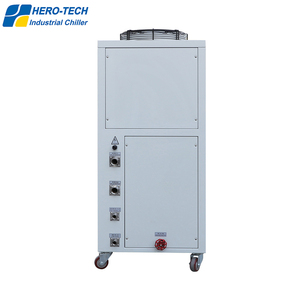




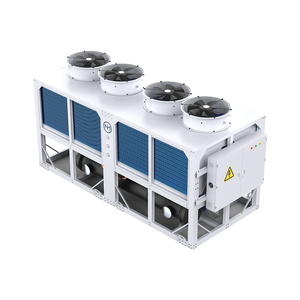





































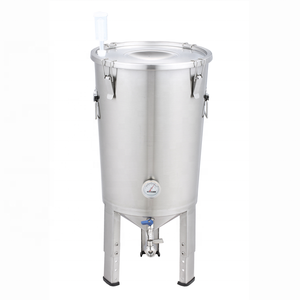














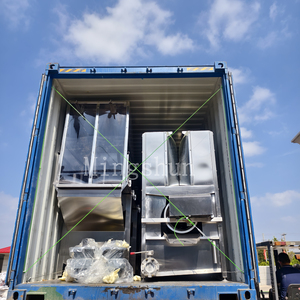




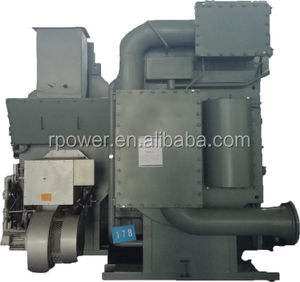




























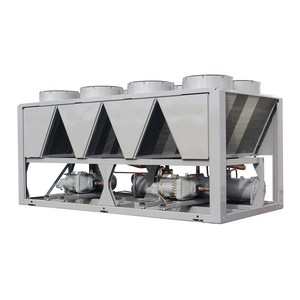
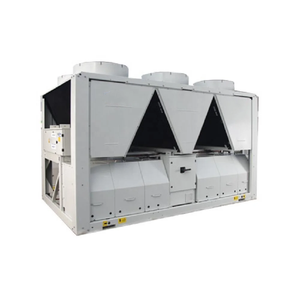



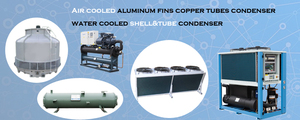



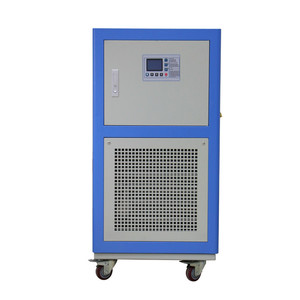


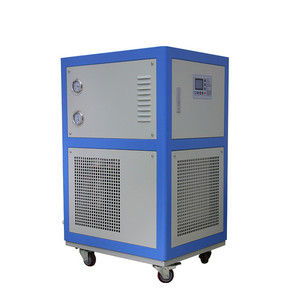

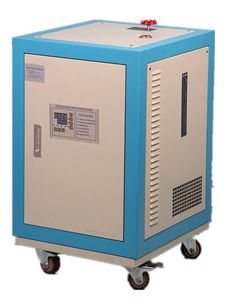

























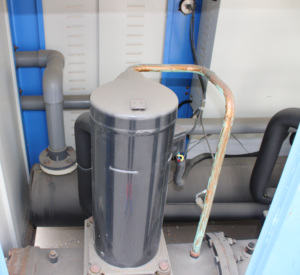











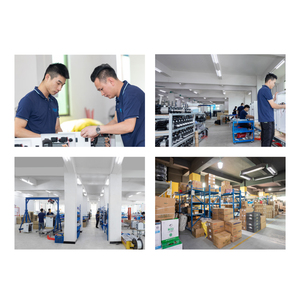














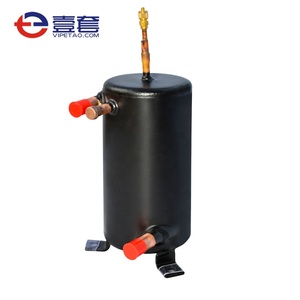




Industries often look for used chillers to cool the equipment or manage the temperature of processes and products. Businesses also want to find used cooling equipment that meets the needs of their application to help save operational costs.
There are generally four types of used chillers based on the method of heat rejection:
Used air-cooled chillers
An air-cooled chiller comprises a condenser fan, compressor, condenser, evaporator, expansion valve, and refrigerant. The process begins when the refrigerant absorbs heat from the fluid in the evaporator. The fan blows ambient air over the coils in the condenser to release the heat that builds up from the refrigerant. The cooled liquid returns to the facility to continue the cooling process. An air-cooled chiller is more compact, and it consumes less energy than water-cooled chillers. However, it may not provide sufficient cooling power for larger industrial applications.
Used water-cooled chillers
A water-cooled chiller operates in the same way as an air-cooled chiller, but water plays the role of heat-releasing medium. Water-cooled chillers are more efficient than air-cooled chillers when cooling larger industrial spaces. Some water-cooled chillers have a cooling tower that helps remove heat from the water. If a central plant is used, it typically comprises a chiller and a cooling tower. A water-cooled chiller may achieve better energy efficiency of up to 0.7 to 1.0 kW/ton compared to air-cooled chillers.
Used absorption chillers
Absorption chillers differ from traditional vapor-compression chillers because they use heat energy to cool instead of electricity. A vapor-compression chiller functions by making the refrigerant evaporate and condense repeatedly through compression and heat exchange. An absorption chiller employs the same refrigerants but uses heat from combustion engines, solar collectors, boilers, or gas burners to cool the water. The heat energy activates the absorber to capture the heat from the evaporated refrigerant to complete the cycle. An absorption chiller is usually used in large commercial buildings.
Used geothermal chillers
A used geothermal chiller is a system that uses the earth's internal heat to cool or heat a building. A geothermal cooling system employs a series of underground pipes called a loop. A liquid refrigerant in the loop absorbs heat from the building and circulates it underground. A geothermal chiller can help reduce energy costs and 25% to 50% less electricity than traditional cooling systems.
Used industrial chillers can also be categorized depending on the refrigerants they use:
Used water chillers
A water cooler chiller is a system that provides cooling to a process or equipment by removing heat from the water. It is commonly used in industrial applications to maintain low temperatures in machinery, condensers, and heat exchangers. A water cooler chiller typically consists of a compressor, evaporator, condenser, expansion valve, and refrigerant. The chiller absorbs heat from the water through the evaporator, where the refrigerant changes from a liquid to a gas. The compressor then compresses the gas, and heat is removed from the refrigerant in the condenser, where it releases cool water that is circulated through the system.
Used ammonia chillers
An ammonia chiller is a refrigerating machine that uses ammonia as its refrigerant to remove heat from a process or to cool air for air conditioning purposes. Ammonia is a compound made of one nitrogen atom and three hydrogen atoms, making it a highly efficient refrigerant due to its high heat absorption capacity. The components of an ammonia chiller include a compressor, condenser, expansion valve, evaporator, and ammonia. The process of cooling in an ammonia chiller is similar to other vapors. The heat of the water or air to be cooled is absorbed by the evaporator, where the ammonia evaporates and absorbs the heat. The ammonia gas then circulates through the compressor, where it is compressed into a high-pressure gas. It moves to the condenser, where it releases heat and transforms into a liquid. The liquid ammonia returns to the evaporator to repeat the process.
Industrial used chillers' key specifications are as follows.
Regular maintenance of used chillers can help improve performance and prolong service life. The following are some common maintenance suggestions for used chillers:
The applications of used industrial chillers are wide-ranging.
Food industry
Used chillers help to preserve food in the food industry. They cool and freeze processed foods, such as ice cream, bakeries, and meat. They also assist with maintaining temperature control during food processing, cooking, and fermenting. Moreover, chillers cool food processing equipment and keep the proper temperature for storage and refrigeration.
Medical industry
Used chillers are essential for preserving temperature-sensitive medicines, vaccines, and blood products in pharmacy and hospital settings. They also support the smooth functioning of medical imaging equipment, laser devices, and centrifuges by preventing the overheating of equipment and ensuring the accuracy of temperature-sensitive medical procedures.
Plastics and Chemical Factories
In Plastics and Chemical Sector, chillers aid in controlling the temperature throughout the chemical reaction and plastic molding processes, enhancing product quality and minimizing defects. They also ensure the accurate chemical reactions of chemicals by maintaining constant chillers in laboratories.
Data centers
In Data Centers, used chillers help to ensure equipment longevity and dependability by keeping server farms, telecom hubs, and data storage facilities properly cool. They also maintain the ideal temperature and humidity levels for sensitive electronic components, thereby preventing downtimes caused by temperature fluctuations.
Entertainment Venues
Used chillers create cool environments for audiences in multiplexes, theatres, and concert halls. They also produce ice rinks for skating competitions, hockey games, and ice-themed events, as well as cool stage and lighting equipment to prevent overheating during concerts, festivals, and outdoor gatherings.
Before buying a used chiller for sale, buyers should evaluate it against the following factors.
Demand Analysis
First, buyers should establish the purpose of the used chiller. Considering the specific need, like the required cooling capacity, refrigerant, and system type, is also essential. Additionally, a study of the target market and popular appliances should inform the preferred used chiller type. An analysis of the most popular commercial used chillers within distinct industry segments is necessary. For instance, a focus on the food processing and pharmaceutical industry could reveal a strong demand for industrial chillers.
Budget Constraints
Used chillers are expensive industrial appliances. Buyers must determine their budget range before entering the negotiations. Thankfully, many distinct used chiller types exist. Buyers can explore options within their budget by specifying cooling needs, such as capacity, temperature range, and the process they are cooling.
Age and Condition
The used chiller market is almost like a car marketplace. Some used chillers have higher mileage than others. While all chillers are expected to show some signs of wear and tear, many parts can be replaced, such as compressors, condenser coils, expansion valves, evaporator coils, and more, buyers should examine the age and condition of the chiller.
Manufacturer Reputation
The used chiller's resale value will depend heavily on the brand chosen. As with used cars, some brands are generally more popular and desirable than others. Buyers must choose a well-known brand with good support.
Service
Like any used appliance, a used chiller will eventually need service. Selecting a service provider with a franchise in the area is essential. A good service provider will have access to many parts and a knowledgeable staff with years of training and experience with specific chiller brands.
Warranty
Most used refrigeration and air conditioning chillers are sold without warranty, but some may have limited warranties on specific parts. Negotiating a warranty on essential parts like the compressor can reduce the risk of a costly early failure.
Q1: Are used industrial chillers safe?
A1: Generally, there is no safety concern connected to used chillers. As long as the machine is in good condition, functional, and well-maintained, there will be no safety issues. Nevertheless, regular maintenance checks are necessary to promptly address any emerging issues to prevent safety concerns.
Q2: Do used chillers consume a lot of energy?
A2: Industrial chillers are typically large machines that consume a lot of power. However, the exact amount of energy consumed depends on factors like whether the chiller is air-cooled or water-cooled, the machine's capacity, and whether it is used continuously or intermittently.
Q3: Can one recover the cost of a used chiller in energy savings?
A3: Generally, high-quality used chillers that work perfectly can be found at a fraction of the cost of new ones. Even more, businesses use industrial chillers to cool down processes rather than directly passing the cooling costs to customers. The chiller's ability to cut down on energy used in the company's processes and the cooling needs typically make it a worthwhile investment.
Q4: What’s the lifespan of a used chiller?
A4: Industrial chillers typically last 15 to 20 years. If well-maintained, it's not uncommon for some chillers to last up to 25 years or more. However, after about 15 years, the machine can start to lose its efficiency and not cool as well as it used to. Some parts may also become harder to find.
Q5: Should one buy used air-cooled or used water-cooled chillers?
A5: There is no preferred type of cooler. Water-cooled chillers are suitable for large-scale cooling needs, while air-cooled chillers are simpler to install and are preferable when tighter budgets are a concern.